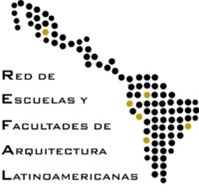Mitigation and adaptation for the reduction of the impacts of climate change in the public spaces-urbanization La Campiña, Arequipa
Keywords:
Adaptation, Mitigation, Climate Change, RisksAbstract
The objective of the research is to determine the relationship between adaptation strategies from the design of urban permits and the reduction of risks related to climate change, with a view to improving the physical, social, and institutional conditions that directly affect the improvement of the quality of life of the population.
The research has been carried out based on the Hypothetical-Deductive research methodology, where data is collected for testing hypotheses based on the numerical measurement (quantities) and statistical analysis (statistical methods), in order to establish guidelines for behavior and prove theories, with a correlational research design, where the sample is the urbanizations that make up the urban authorizations.
The sample corresponds to the Campiña conformed by 9 urban authorizations, and the population of said urban habilitations, that ascends to 3,864 inhabitants. The technique of surveys and observation of data was used, using as instruments the questionnaire and the observation form. The analysis of the community, environmental and institutional aspects was carried out, where training, adaptation in green areas, as well as programs and projects play a fundamental role in the definition of mitigation and adaptation strategies in risk reduction due to climate change.
It concludes with the approach of strategies for the zones of greater risk, the integration of the mitigation and adaptation in the instrument of territorial ordering like one of the alternatives to reduce the impact of the climatic change.
Also increase the adaptive capacity and resilience of ecosystems, design projects that contemplate green infrastructure in public spaces are approaches of the present investigation. The social component also affects the reduction or risk due to climate change, with a population trained in prevention measures, in the response to hazards caused by climate change, such as heavy rains, it will be possible to reduce vulnerability in their exposure and fragility and therefore the risk is reduced.
Another component is the institutional, in charge of local governments and institutions of civil society that lead and propose Safe Development Model, organize the population to face the impacts of climate change, promote projects that are financed with Green bonds; these are some solution alternatives.









